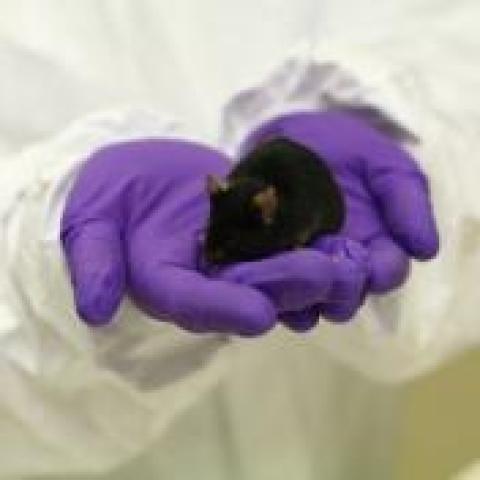
Despite its obvious limitations in mimicking everything that goes on within the human body, the laboratory mouse has proven to be an invaluable model of the human condition. Perhaps no strain of mouse exemplifies this best than a highly inbred mouse strain known as C57BL/6, sometimes abbreviated to “black 6” or B6.
This dark-furred rodent is sensitive to pain and cold, likes to drink alcohol when offered it, and tends to suffer from atherosclerosis and age-related hearing loss. It also has a weakened immune system, probably resulting from generations of inbreeding between closely-related individuals in an attempt to make the population as genetically homogenous as possible – a prerequisite for a good research model where genetic differences between individuals can skew experimental results.
This was the strain of mouse whose genome was first sequenced in 2002, eighty-one years after it was created by American geneticist Clarence Cook Little in 1921 working in the neo-gothic splendour of the Bussey Institute at Harvard University. Mating brother and sister mouse for generation after generation and selecting the most vigorous pups for further in-breeding, Little eventually produced many distinct sublines that were almost as closely related to each other as genetic clones. Black Subline 6 (BL6) became the most popular for scientific research and they were subsequently bred in their millions for scientific research around the world.
As Daniel Engber, writing in Slate, has noted: “From its start, the Black-6 was meant to be as reliable as a rubber stamp, but Little had grander aims for his identical, inbred mice. He wanted one kind of animal to stand in for all the others in the lab: a mouse that served as a tiny cow, sure, but also a rabbit, a dog and a monkey. His inbred legions would take the place of humans, too, in testing of new drugs and treatment for cancer, tuberculosis and every other disease of man or mammal.”
Unfortunately, Little’s reputation became somewhat tarnished for his support of eugenics and his denial of the links between tobacco and cancer. But his highly inbred, little black mouse lives on in labs around the world where scientists study the complexities of the mammalian immune system.
